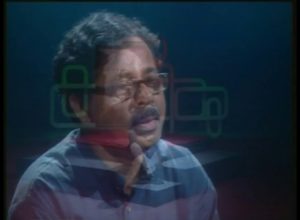1. Introduction to Mythology in Modern Game Design
Ancient mythologies have long served as a fertile foundation for storytelling in entertainment, influencing everything from literature to film, and notably, modern video games. These mythic narratives, filled with gods, heroes, and mythical beasts, provide a timeless source of inspiration that transcends cultural boundaries.
In game development, storytelling is crucial for engaging players, and archetypes derived from mythology—such as the hero, the trickster, or the villain—help create compelling characters and narratives. These archetypes resonate across cultures, enabling developers to craft worlds rich in depth and meaning.
This article explores how mythology continues to shape contemporary game design, illustrating this through examples like get the expert guide on integrating mythological themes into gaming experiences. By understanding this connection, we uncover how ancient stories influence the way games are created today.
2. The Foundations of Mythological Inspiration in Games
Mythologies serve as a vast reservoir of narrative ideas, offering complex worlds, characters, and themes that developers can adapt. These stories often feature gods, legends, and moral lessons that can be woven into game plots, creating immersive and meaningful experiences.
Common archetypes drawn from myth include:
- The Hero: Embodying bravery and virtue, as seen in figures like Hercules or King Arthur.
- The Trickster: A cunning figure who challenges authority and introduces chaos, like Loki or Anansi.
- The Deity: Powerful gods with control over natural elements, such as Zeus or Ra.
Psychologically, these myth-derived characters evoke recognition and emotional investment from players, while culturally, they reinforce shared values and collective identity. Incorporating such archetypes enhances narrative depth and player engagement.
3. Archetypal Characters and Their Evolution in Game Design
a. The Trickster Archetype: Origins and Characteristics
The trickster is an archetype found across numerous mythologies—Native American, Norse, African, and more. Traditionally, tricksters are cunning, unpredictable, and often humorous, challenging authority and rewriting the rules. They serve as catalysts for change, embodying chaos and ingenuity.
b. Modern Interpretations and Adaptations
In contemporary games, trickster characters are often reimagined to add humor, unpredictability, or moral ambiguity. For instance, in the game Le Zeus, the titular character adopts a quirky persona, greeting players with humorous phrases like “BONJOUR!” and engaging in playful interactions, which echoes traditional trickster traits but with a modern twist.
c. Enhancing Engagement and Depth
Using archetypes like the trickster enriches storytelling by introducing dynamic characters that challenge players’ expectations. This depth increases emotional investment and fosters a more memorable gaming experience.
4. Visual and Narrative Elements Drawn from Mythology
Game art frequently incorporates symbols, motifs, and aesthetics inspired by myth. For example, depictions of lightning bolts, laurel wreaths, or mythical creatures can evoke specific cultural associations and reinforce thematic elements.
Narrative techniques also mirror mythological storytelling structures, such as hero’s journeys, quests, or moral dilemmas. These techniques provide familiar frameworks that help players understand and relate to complex stories.
In the case of get the expert guide, the game employs visual symbols like Zeus greeting players and a quirky persona that draws directly from mythological themes—highlighting divine authority with a humorous personality, making ancient mythology accessible and engaging.
5. The Role of Cultural Specificity and Global Appeal
Incorporating authentic mythological elements requires balancing cultural specificity with universal themes. While detailed representations of specific myths deepen authenticity, they must also resonate broadly to appeal to a global audience.
Developers face challenges in portraying diverse mythologies accurately without cultural stereotypes. However, this also offers opportunities to educate players about different cultures, fostering greater immersion and respect.
Cultural portrayal influences player perception significantly. Respectful and accurate representations can enhance immersion, while superficial or stereotypical depictions risk alienating audiences or perpetuating misconceptions.
6. Mythology as a Tool for Game Mechanics and Features
Game mechanics often draw inspiration from mythological stories and powers. For example, bonus triggers or special symbols might represent divine intervention or mythic quests, enriching gameplay with thematic coherence.
Features such as the hidden bonus in Le Zeus, triggered by FS symbols, can be seen as a nod to mythological connotations of luck, fate, or divine favor. These elements make gameplay more engaging and thematically consistent.
| Mythological Game Mechanic | Example |
|---|---|
| Divine Powers Activation | Zeus’ lightning strikes in slot games |
| Fate and Luck Symbols | FS symbols in Le Zeus triggering bonuses |
7. Non-Obvious Depths: Mythology-Inspired Game Design and Player Psychology
Mythological themes evoke strong emotional responses, tapping into nostalgia and universal stories of heroism, betrayal, and divine intervention. These evoke a sense of wonder and connection that enhances player immersion.
The trickster archetype, for instance, influences game mechanics by adding unpredictability and humor, making gameplay more dynamic. Characters embodying this archetype can introduce surprises that keep players engaged.
“Memorable characters and storylines rooted in mythological archetypes foster emotional bonds and nostalgia, elevating gaming from mere entertainment to a meaningful experience.”
Language and personality quirks—like Zeus saying “BONJOUR!”—add layers of personality that make characters more relatable and memorable, further deepening player engagement.
8. Future Trends: Mythology’s Role in Innovation in Game Design
Emerging technologies such as augmented reality (AR) and virtual reality (VR) open new horizons for myth-inspired storytelling, allowing players to step into mythic worlds firsthand. Imagine exploring ancient temples or battling mythic creatures in immersive environments.
Cross-cultural mythological mashups—combining elements from different traditions—offer innovative narrative possibilities, creating rich, diverse universes that appeal globally.
Moreover, the role of archetypes evolves as developers experiment with complex characters and layered stories, pushing the boundaries of narrative depth in games.
9. Conclusion: Bridging Ancient Myths and Modern Gaming Experiences
Mythology remains a vital influence in game design, offering timeless themes and archetypes that continue to inspire innovative storytelling and mechanics. When thoughtfully integrated, mythological elements enrich gameplay, making it more immersive and meaningful.
Modern examples, like get the expert guide, demonstrate how ancient stories can be reimagined for contemporary audiences, blending tradition with innovation. This ongoing dialogue between past and present ensures that mythology continues to shape the future of gaming.








